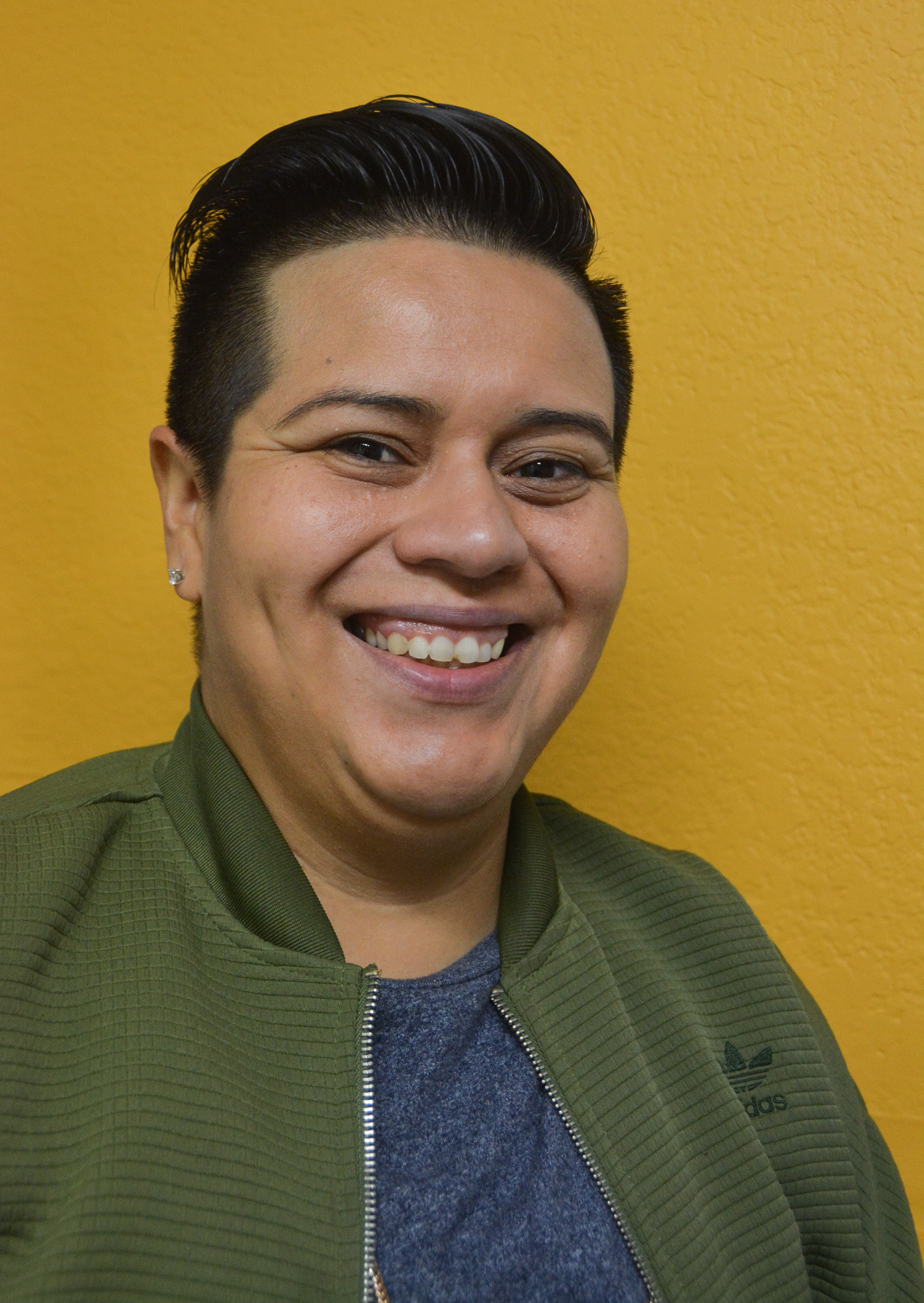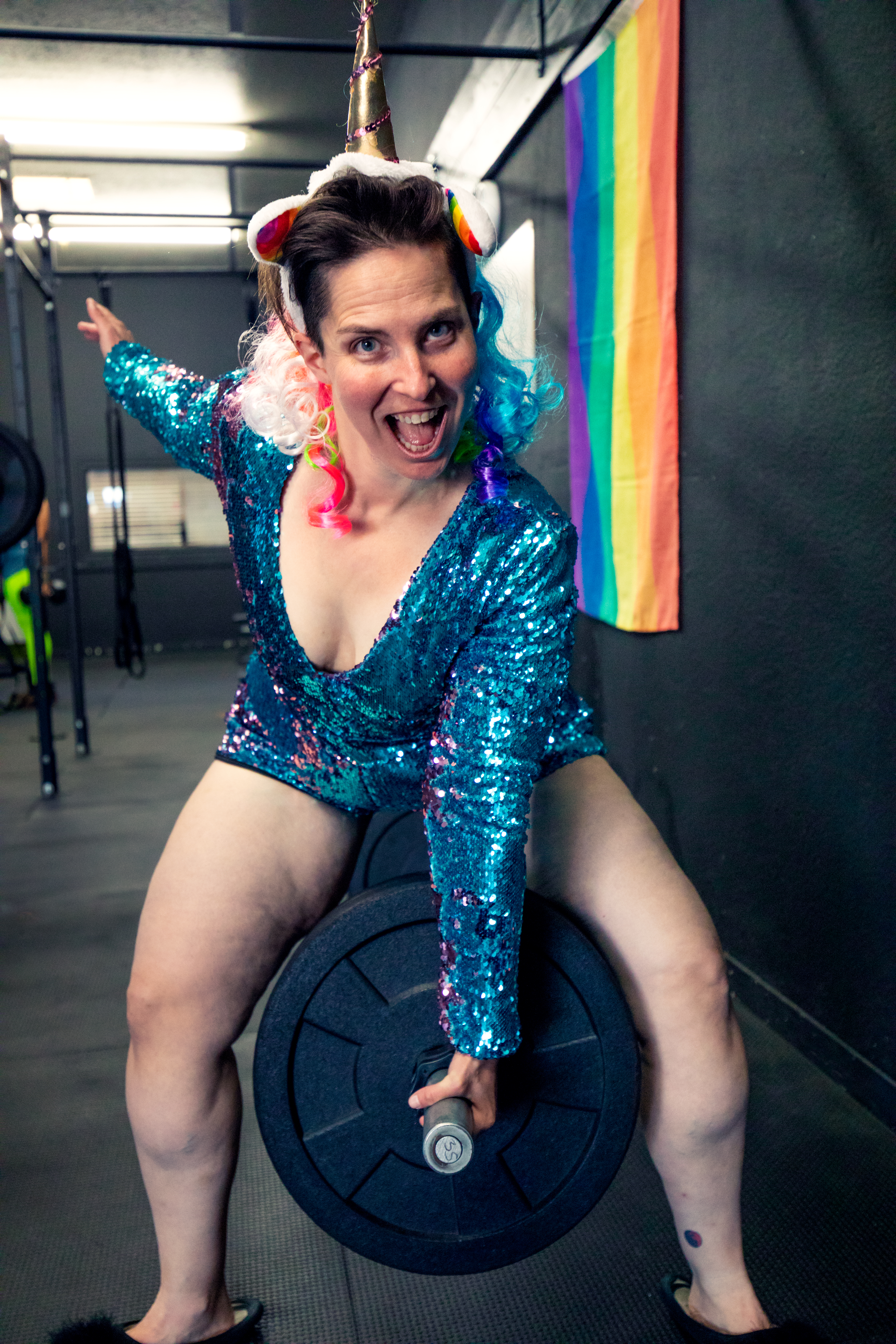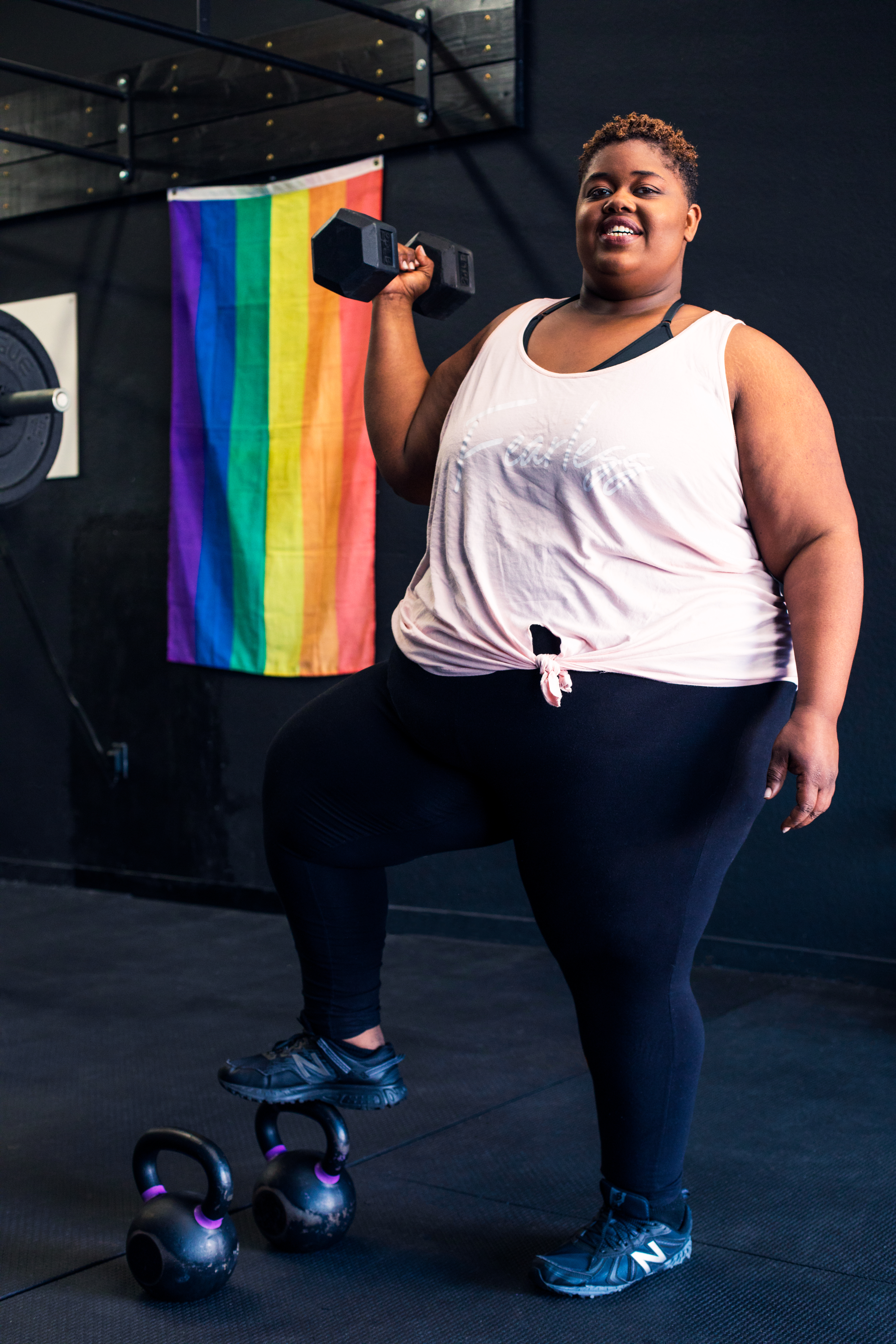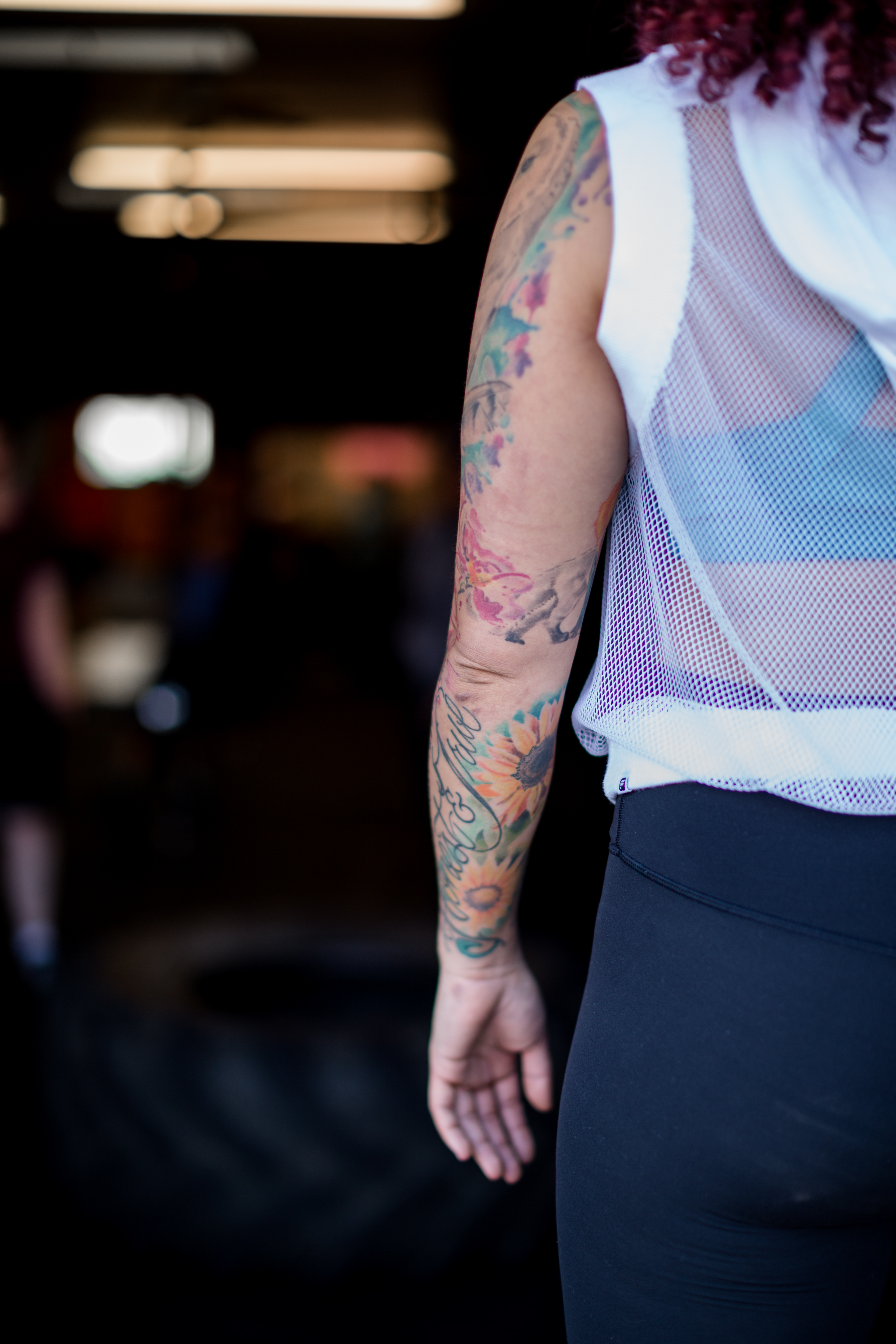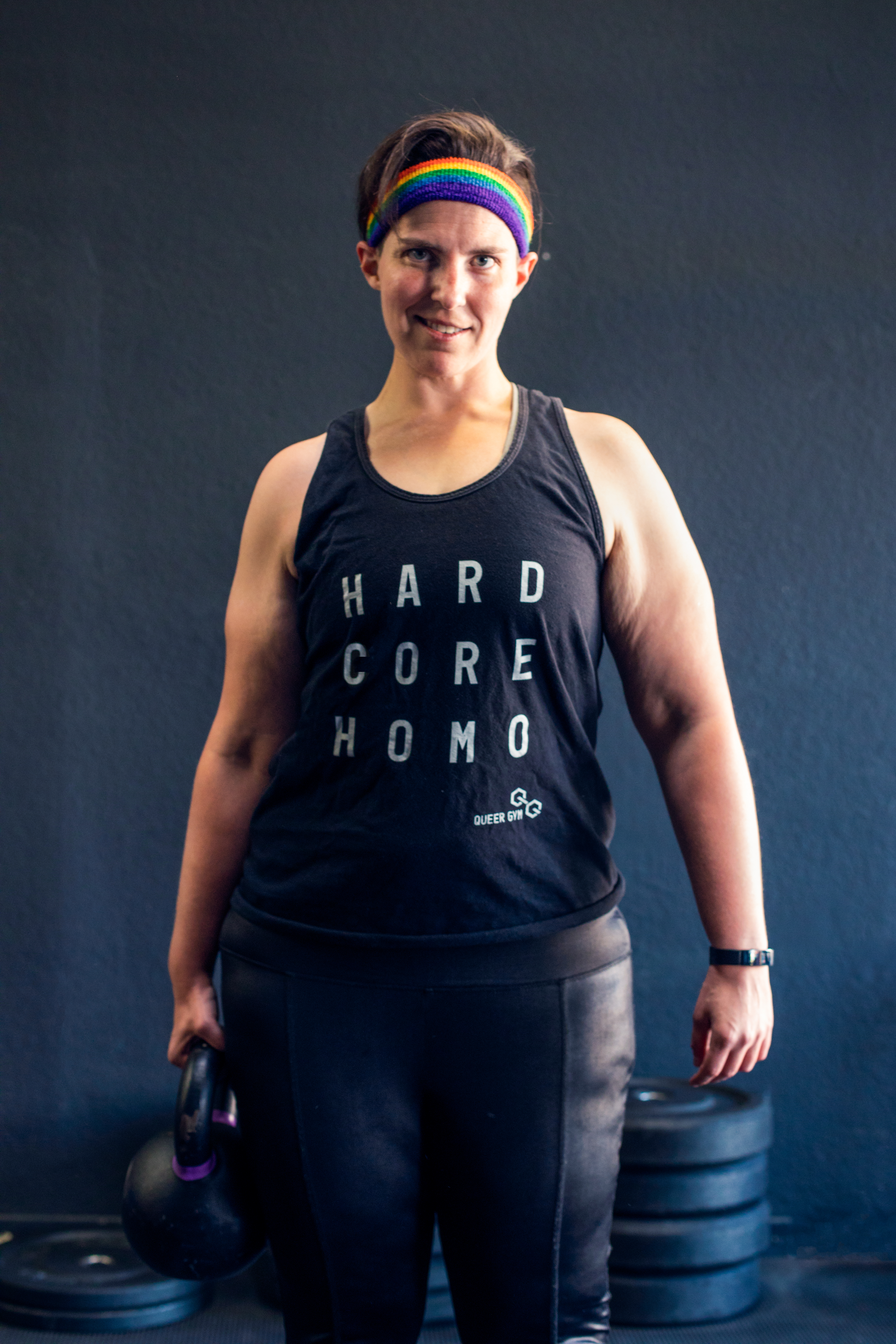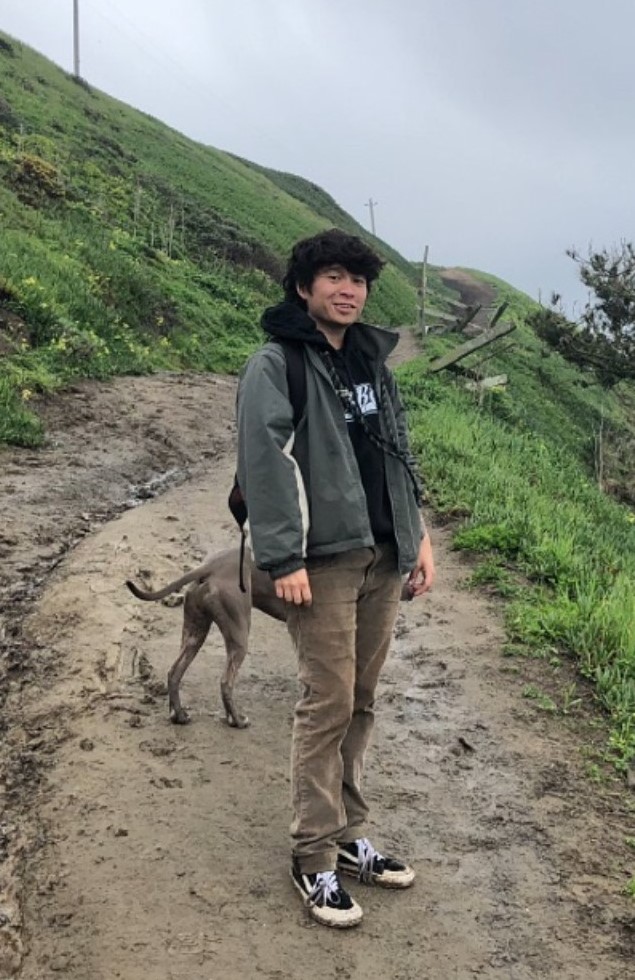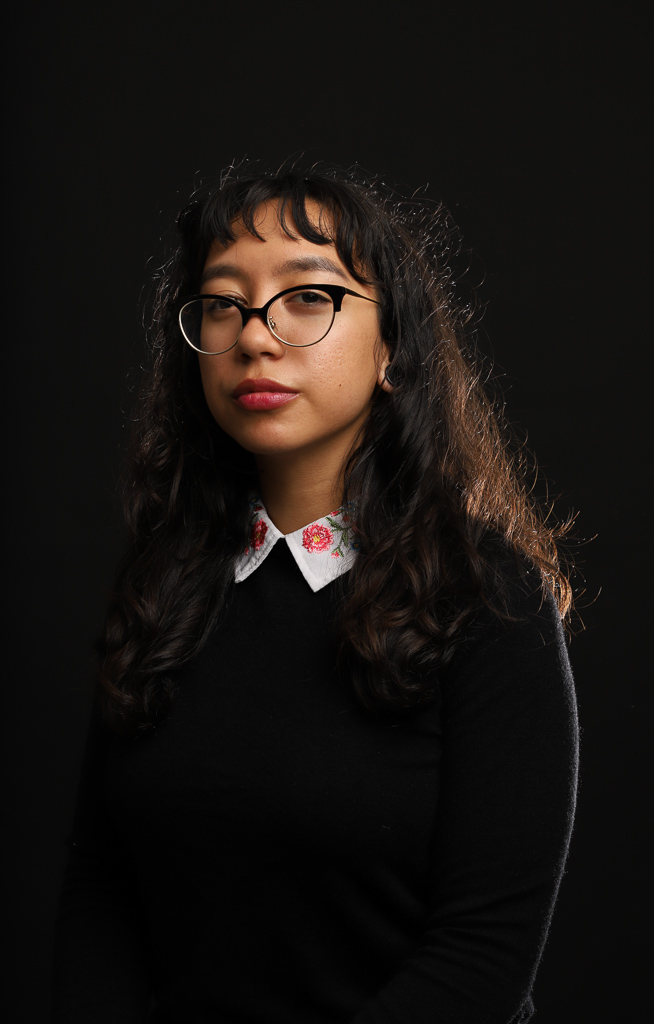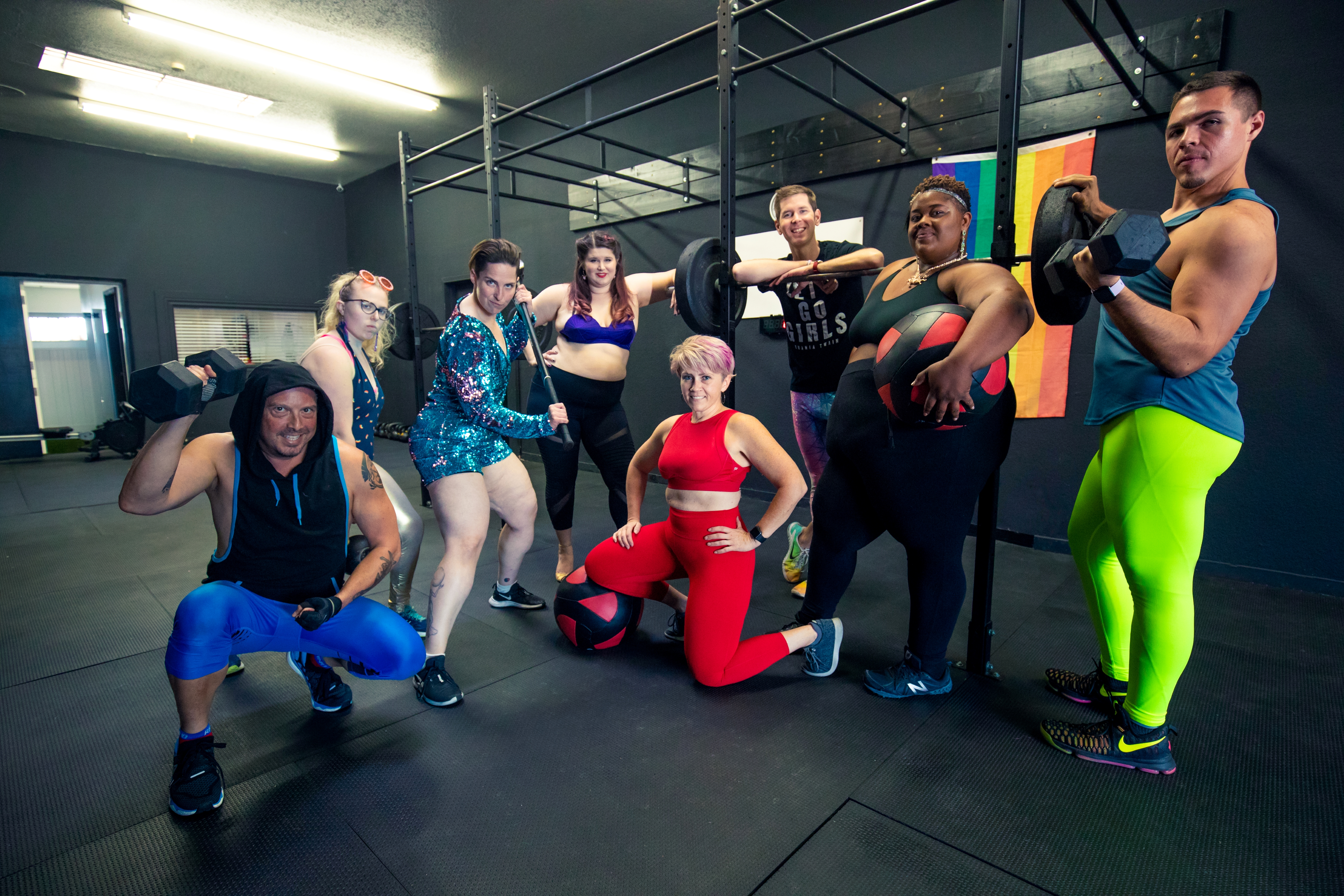
QUEERING YOUR WORKOUT
The Queer Gym in Oakland provides space for
LGBTQ+ people to build muscle and community
When Nathalie Huerta created the world's first Queer Gym in 2010,
she had no idea how much her small business would mean to the
LGBTQ+ community in the Bay Area.
As Huerta works through the issues of running a small business
in an area constantly becoming more expensive, the queer community benefits
from having a space to build relationships and focus on their well-being.
Some terms to know moving forward
-
Queer
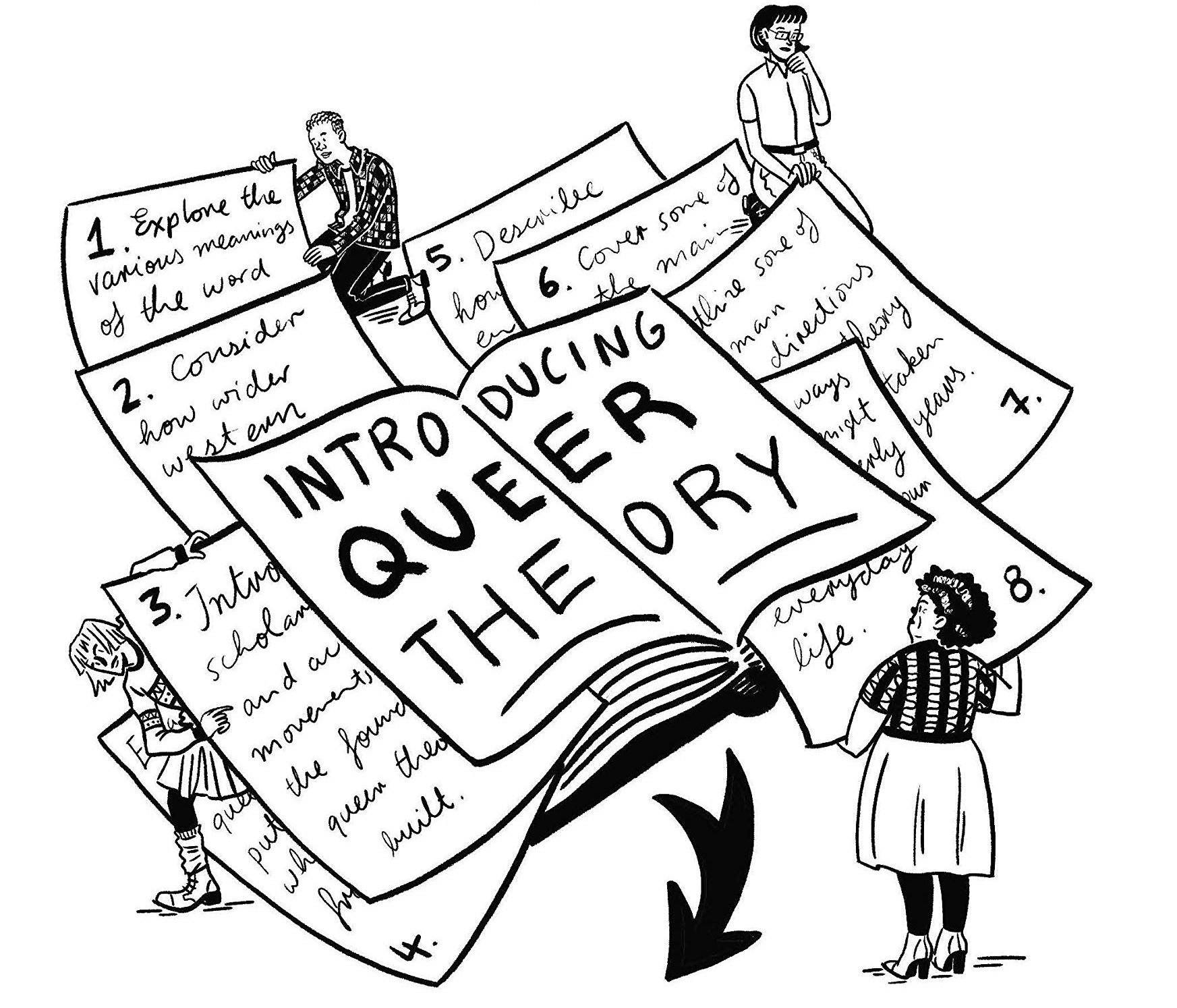
Queer
Queer is a term with many different meanings. It originally referred to strangeness or difference, and became a term of abuse.
It has since been reclaimed and operates as an umbrella term for people outside of the heterosexual norm or those who challenge the LGBT (lesbian, gay, bisexual, transgender) "mainstream," according to Queer: A Graphic History.
Queer is now considered an inclusive term for any people who consider themselves outside of the heterosexual, cisgendered norm.
Illustration by Dr. Meg-Jon Barker, they are
a co-author of Queer: A Graphic History. -
LGBTQ+
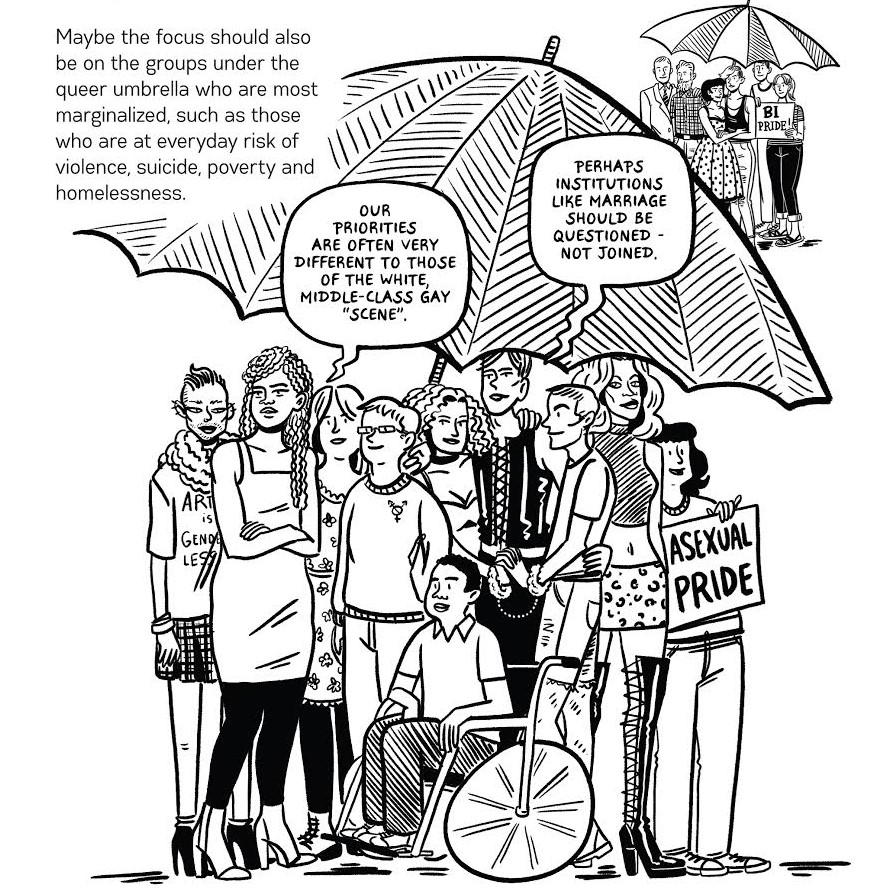
LGBTQ+
The LGBTQ+ acronym is an expansion on the "mainstream" LGBT that is more inclusive of queer people.
This umbrella term stands for lesbian, gay, bisexual, transgender, queer and more. There are many other versions of inclusive acronyms (LGBTQIA, LGBTQIA+), but they all aim to accomplish the same goal: to represent more queer people.
It is pronounced
"Ell-Gee-Bee-Tee-Que-Plus."
Illustration by Dr. Meg-Jon Barker, they are
a co-author of Queer: A Graphic History. -
Gender Spectrum

Gender Spectrum
Western societies are becoming more comfortable with the concept of gender as varied and performative. European history categorizes people into two genders, male and female, known as the gender binary. Indigenous people celebrated non-binary folks for centuries before European colonialization enforced the gender binary.
Those who identify with the gender they were assigned at birth are Cisgender, such as cis-female or cis-male. Those who do not identify with the gender they were assigned at birth are Transgender. And those who identify outside of the gender binary are Non-binary.
Illustration by Dr. Meg-Jon Barker, they are
a co-author of Queer: A Graphic History. -
Pronouns
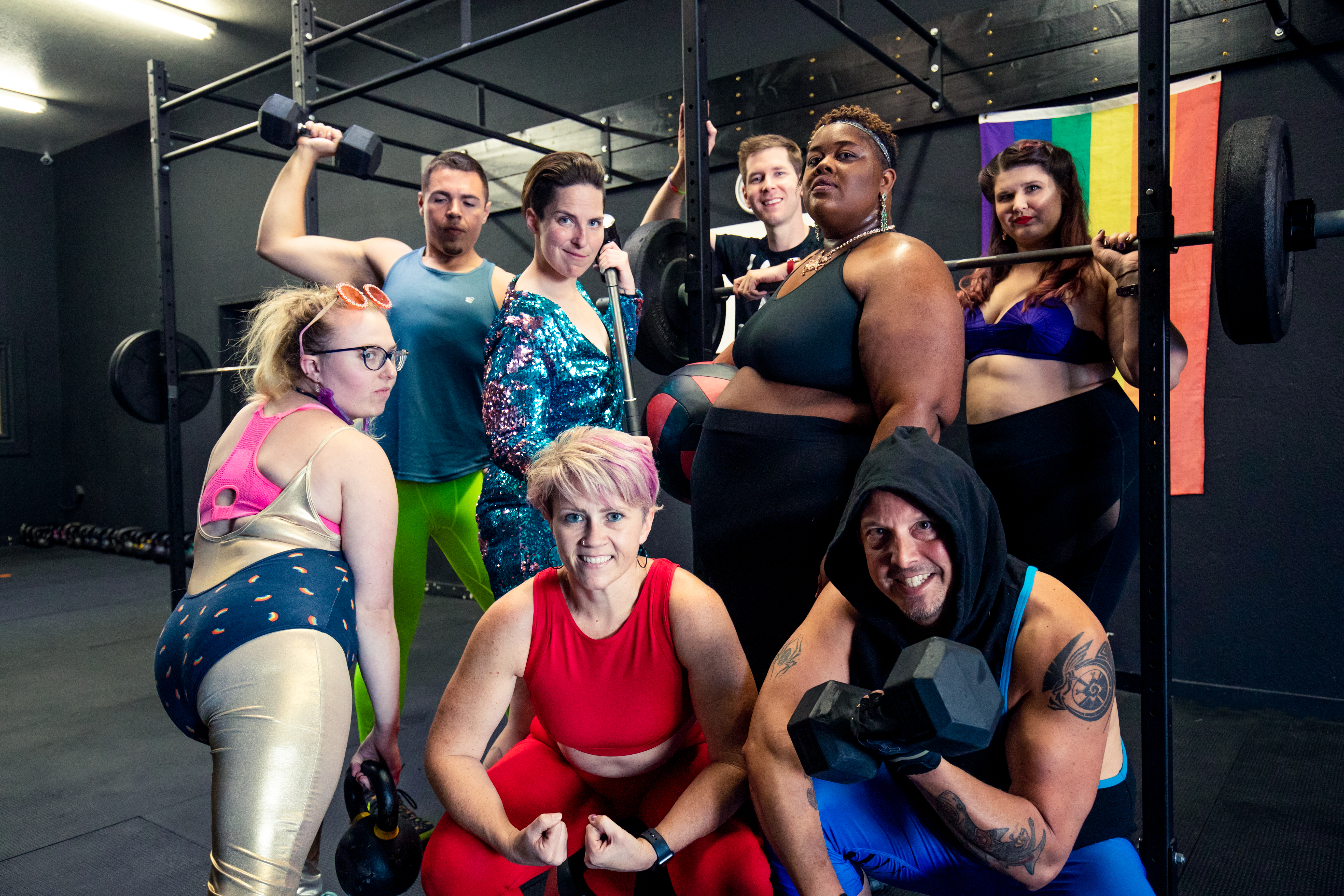
Pronouns
Our personal pronouns help others address us. And for gender queer people, using correct pronouns can help them feel more comfortable: he/him, she/her, they/them, ze/zir, other pronouns or no pronouns at all.
Some people have trouble using pronouns like she/her for transwomen, or they/them for gender non-binary folks, but it does become easier with practice.
At the Perfect Sidekick Queer Gym, each training session begins with every person introducing themselves and sharing their preferred pronouns.
Photos by Kane C. Andrade @kanecandrade
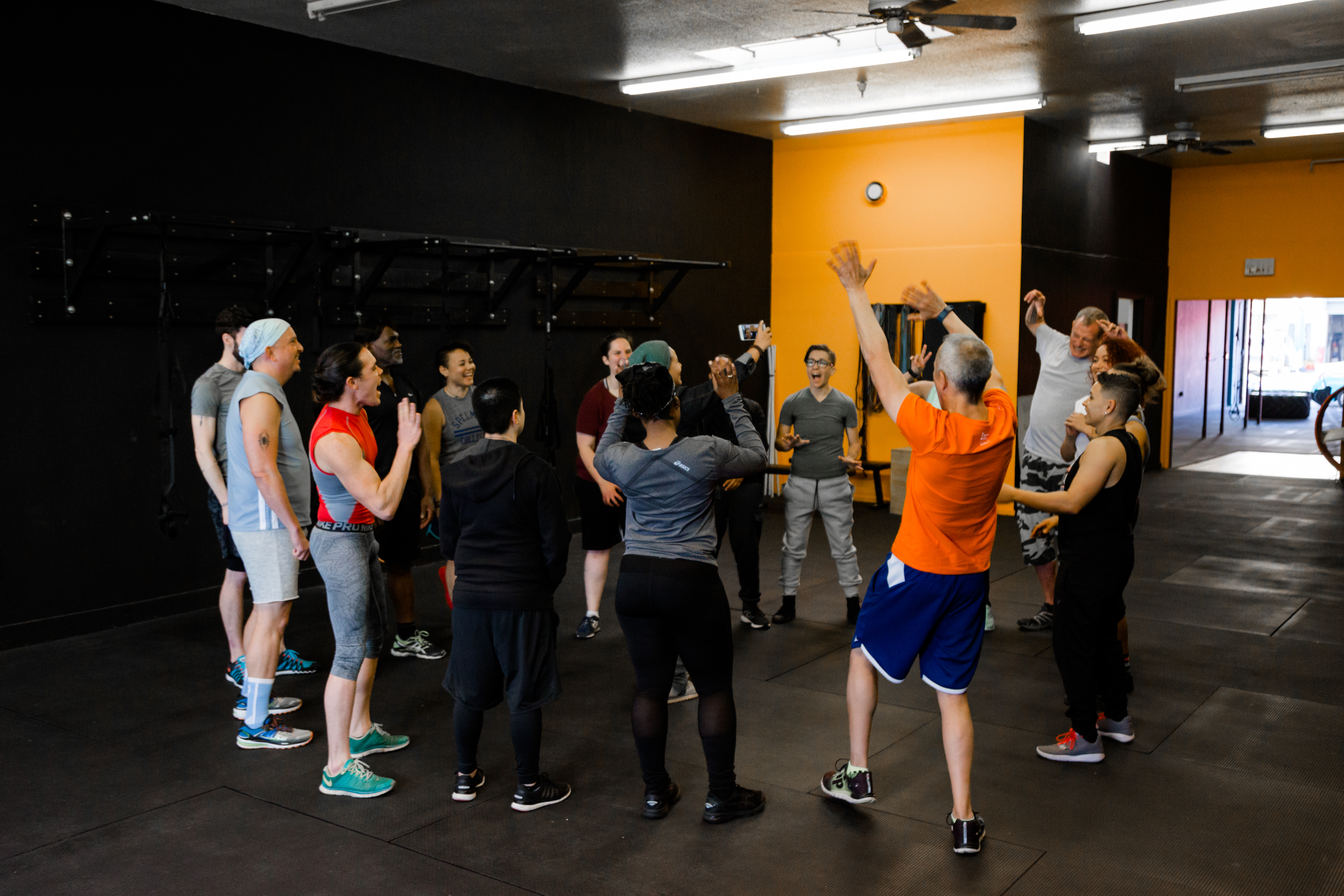
Meet Coach Nat
Founder & CEO of the Perfect Sidekick Queer Gym
Early into her career, Nathalie Huerta realized she needed a way to stand out among the many fitness coaches in Oakland. The culture of mainstream gyms wasn’t inclusive of people like her, a masculine-presenting Latinx lesbian, and she imagined a place where queer people could work out in peace.
Ten years later, she owns that place:
the Perfect Sidekick Queer Gym.
In 2010, Huerta searched the internet for a queer-friendly gym: the only results that came up were of porn. She’d been working as a personal trainer since graduating from undergrad and was tired of, as she put it, “the shitty things women deal with at gyms” — mainly the unwanted male attention often present in hypermasculine athletic environments.
When she started presenting more androgynously, she said it got even weirder.
“There was just this point where I was like, I can't be the only fucking lesbian with this shit problem,” she said.
She began pursuing a master’s in business and in her second semester became self-employed, advertising to clients on sites like Craigslist. It soon became clear to her that she needed something to set her apart from other trainers.
“I was like, what makes me different?” she said — “I’m hella gay!”
Thus, Queer Gym was born.
2010: Coach Nat Huerta moves to Oakland and starts the first Queer Gym
Huerta moved to attend Mills College for her master's degree in business administration. She finds her early customers by posting ads for personal training on the "Women seeking women" page on Craigslist. In the winter, she opens her first brick and mortar location.
2012: Graduates and decides to stay and build the Queer Gym community
Huerta's plan was to move back east after graduating from Mills College, but she decided to stay in the Bay and continue running the Queer Gym. She thought, "Shit, I think I'm onto something, this might be a thing." She and her wife committed to the gym and to Oakland.
2015: "When we really blew up"
The Supreme Court decision on Obergefell v. Hodges recognized same-sex marriage as legal in all states and brought national attention to the queer movement. This meant more business for Huerta and the Queer Gym. They moved to a bigger location and began running accountability programs that made the gym more of a place of transition and community, instead of just exercise.
2019-2020: Changing business model to "Queer Gym 2020"
Now Huerta is changing her business model from group classes and personal training to include hyper-individualized life coaching. People all over the country can work with the Queer Gym coaches to achieve their fitness and wellness goals. Their focus is on accountability and relationships.
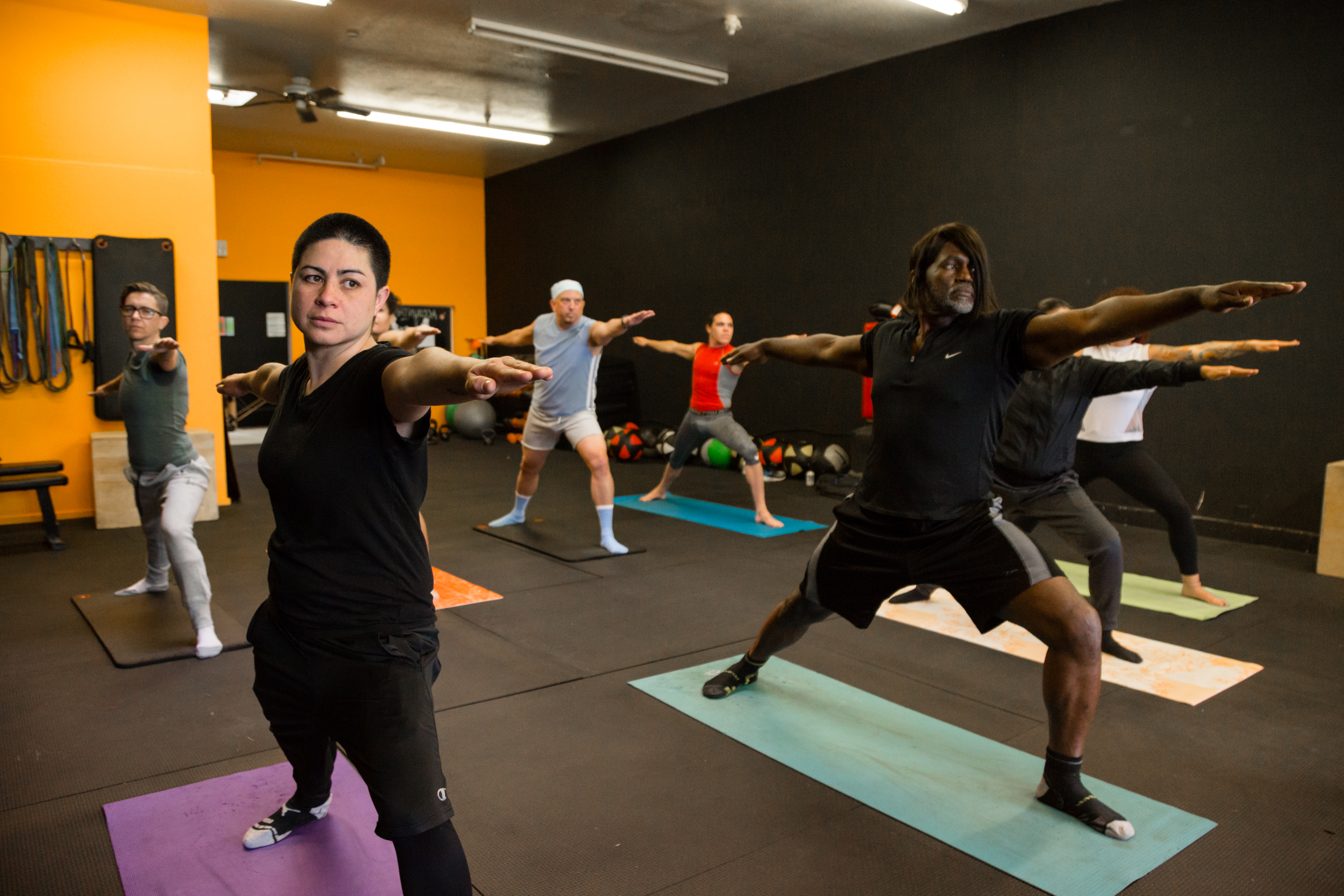
Part 1: Gym Memberships and Habits
What makes the Queer Gym special?
Gyms in San Francisco and Oakland
Memberships at the Queer Gym come at premium prices, at $49-$500 per week depending on which services members receive. The immense cost of running a small business in the Bay Area affects what Huerta charges her clients, and the types of relationships she has with members.
This map shows how much some gym memberships cost in the Bay Area, but it can also be used to explore how marketing changes due to location and the socio-economic status and identity of potential clients.
Prices range depending on the types of coaching and services each of these gyms provides, from standard exercise equipment to hot stone massages to self-defense courses for women.
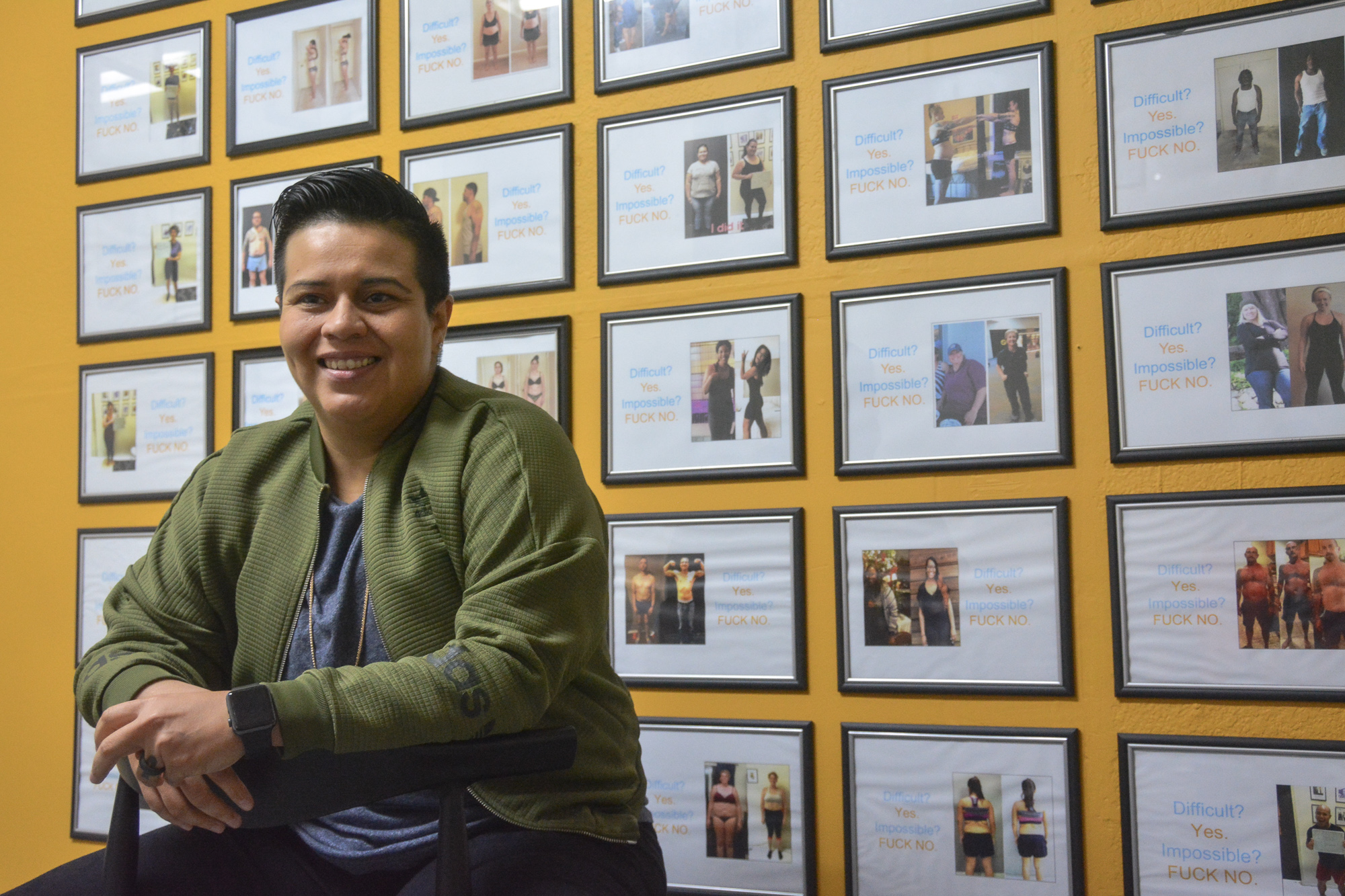
What keeps people coming
Ten years later, Huerta’s business
is thriving, despite her cut to clientele through the new business model she is putting into action for 2020.
With group classes, personal training, accountability counseling and now online hyper-individualized life coaching, these services are intensive at a premium price.
Photo by Shaylyn Martos @shaylynmartos
At their highest point, the gym had about 230 members. Since rolling out the accountability coaching and changing the business model, the number has dropped staggeringly to just 80. These people pay a premium for services and are more committed to the program.
And it shows, the Queer Gym’s retention rate was at 97% as of November, a number expected of top elite gyms. Many gyms fall around a 60% retention rate.
The Centers for Disease Control and Prevention (CDC) releases aerobic and muscle strengthening guidelines each year; but research shows that most adults do not meet the requirements. Depending on their age, only about 20-25% of adults achieved the recommended 150 minutes of moderate-intensity or 75 minutes of high-intensity aerobic exercise on two or more days a week in 2018.
Huerta says that most of her clients are people who are realizing that “adulting is a bitch.” Many of them were active throughout school and college, but as life got more complicated and they gained more responsibility, exercising faltered as a priority.
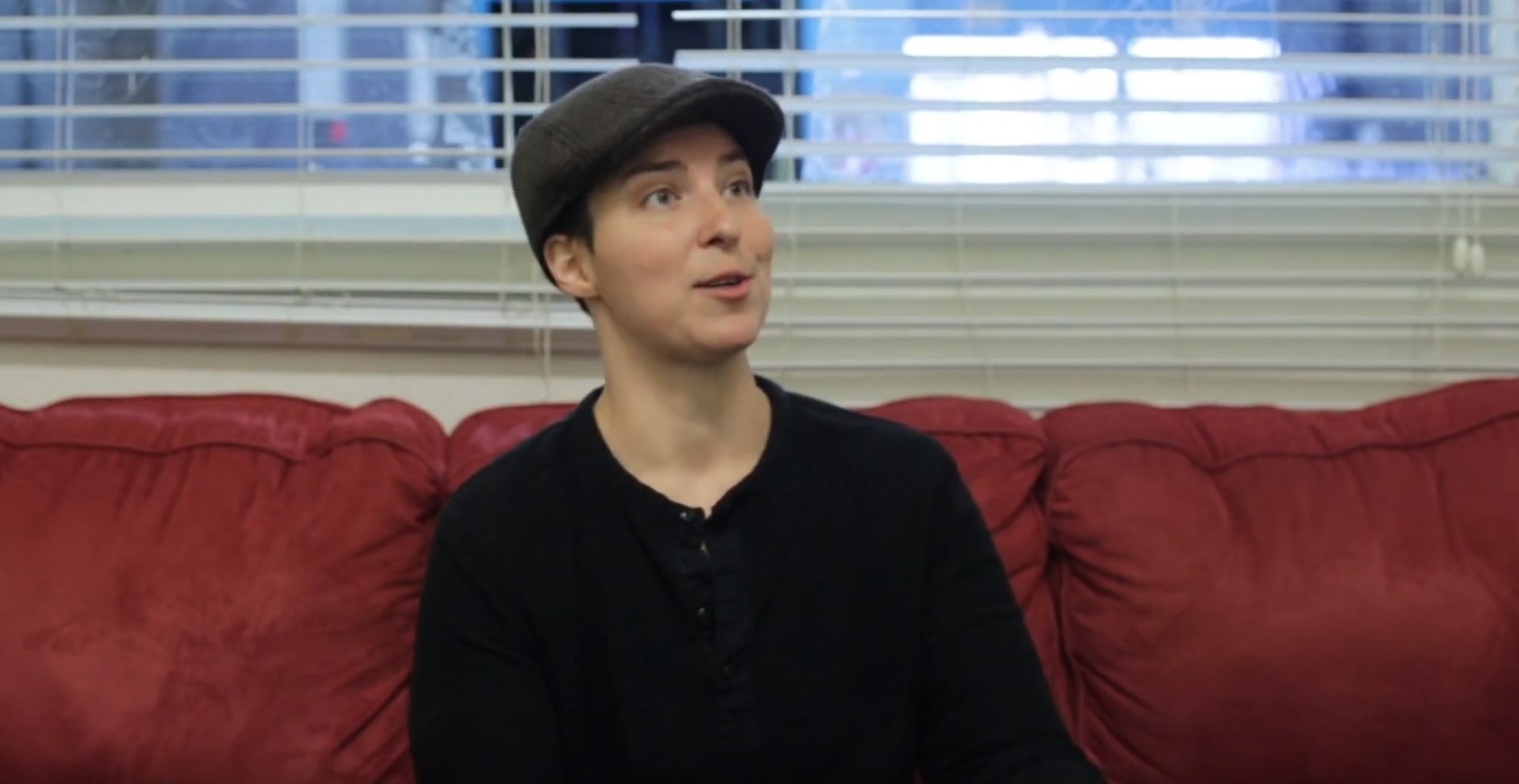
Meet Coach KJ
KJ Kelsch is an accountability coach at Queer Gym — “basically that means that I help people become their best selves,” she said.
Before that, she started as a client after seeing Huerta driving around Oakland with Queer Gym’s logo on her car. “I've lost about 115 pounds to date,” she said. “So, you know, I've been there. Like, I've been in the position of many of my clients and so I can I can relate.”
Each of Kelsch’s clients start with a nutrition consultation. Workout routines are then chosen based on their individual fitness goals. Everyone’s process is different, and Kelsch is there to make sure members feel supported enough to stay on track.
“She calls me on my nonsense, which is exactly what I need,” said member Shaleena Reyersbach. “My first meeting with KJ, she took the time to understand like, Who am I as a person? Like, when what motivates me? When do I get demotivated? What does that look like?”
Kelsch enjoys having a client base with diverse lifestyles — people with children, older people, partnered people. “I think that we do a really good job of making sure that everybody feels included regardless of where they're coming from or where they're starting.”
The Keep/Drop Dilemma
One of the reasons most adults don’t get the exercise they need is because they don’t stick with the regimens they start. This provides a huge issue for gyms, new clients who flood businesses in January for their New Year’s Resolutions usually leave within a couple months.
In an article in the Psychology & Marketing journal from 2007, researchers argued that when clients are given rigid expectations in their gym membership contracts, they are less likely to continue.
“However, when consumers consider the flexibility they have to delay the keep/drop decision (i.e., drop flexibility), or the anticipated regret associated with making the wrong decision, the effects of Future Usage Uncertainty (FUU) are essentially eliminated, and consumers are more likely to continue in the relationship.”
To combat FUU in the Queer Gym, Huerta and her team employ multiple strategies.
For one, there are no mirrors in the space, so clients focus less on what they look like and more on how they feel. Their hyper-personalized accountability and nutrition programs are now available in-person or online, although for a premium price.
The gym also offers Six-Week and Four-Week Challenges for their new members, what Huerta calls clients’ “dating period.” In this time there is no expectation that clients will continue the service, and their coaches get a feel for if the client is committed to the program.
Many people leave traditional gyms because they cater to one or two specific types of people, said Kelsch. “I think that we do a really good job of making sure that everybody feels included regardless of where they're coming from or where they're starting.”
Huerta says she thinks that’s where the world of business is heading to, “It's moving to online, and how you create loyalty and community and brand awareness and all that in a place where you don't necessarily always see each other.”
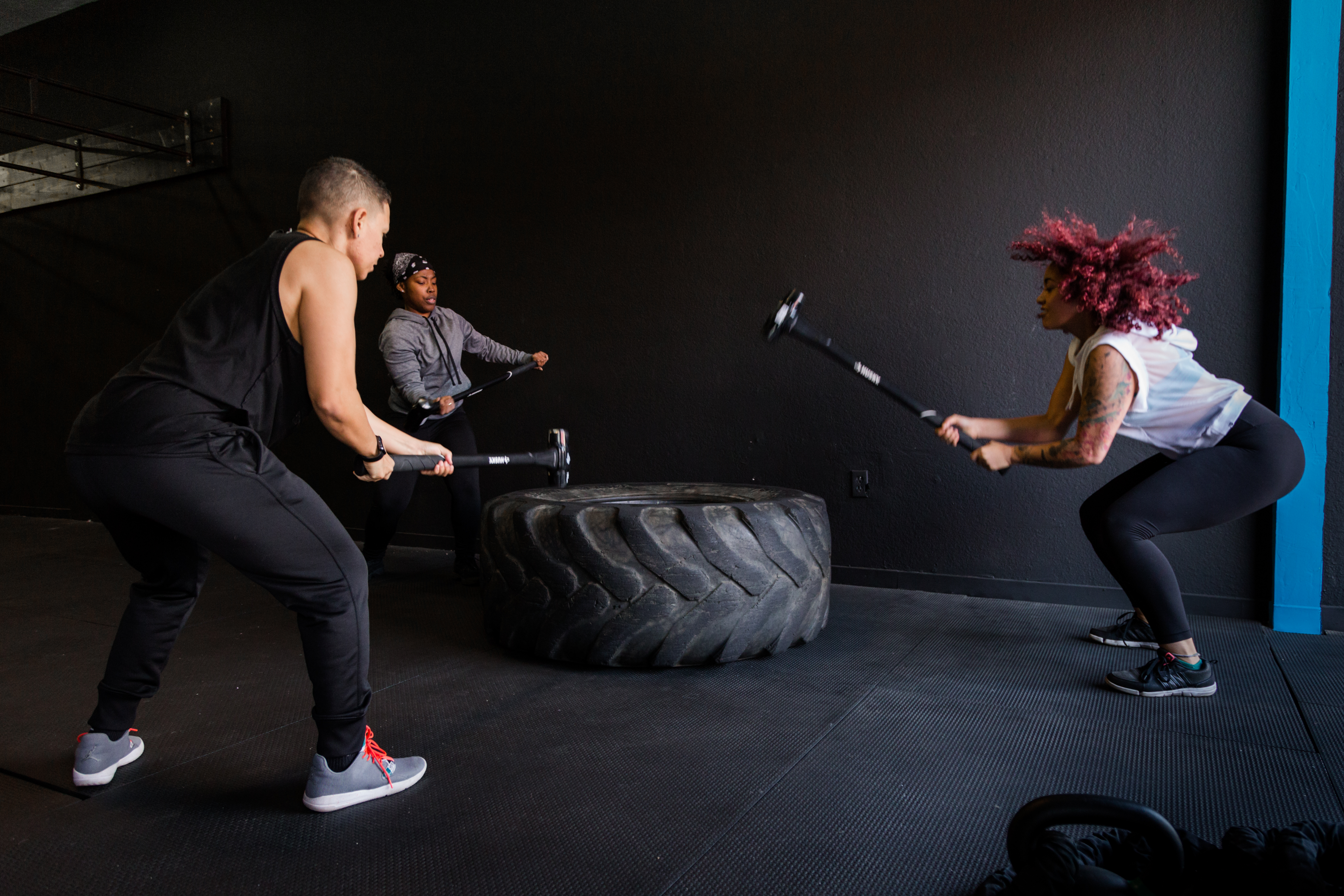
Part 2: Queer Health and Wellness
Why LGBTQ+ people have different health concerns and more difficulty having those issues addressed
Let's talk about Queer Health
Creating impactful fitness routines and fostering a sense of community aren’t the only considerations needed to run a place like Queer Gym. There also needs to be an understanding of health issues relevant to the populations they serve.
Queer people have sets of health issues, risks and concerns that are unique to their communities. Transgender people who choose to medically transition go through lengthy adjustment periods after starting hormones or getting surgeries, for instance.
Mental health issues like depression, common among marginalized groups, often impact people’s diet and exercise habits. Not to mention the residual effects left over in people’s bodies from various types of trauma.
According to a 2008 Statistics Canada Health Report, queer men had higher rates of heart disease, liver disease, asthma, back problems, and chronic fatigue syndrome when compared to straight men.
Additionally, bi and gay people were more likely to report having poor overall health than heterosexual people, and queer women were more likely to receive disability income.
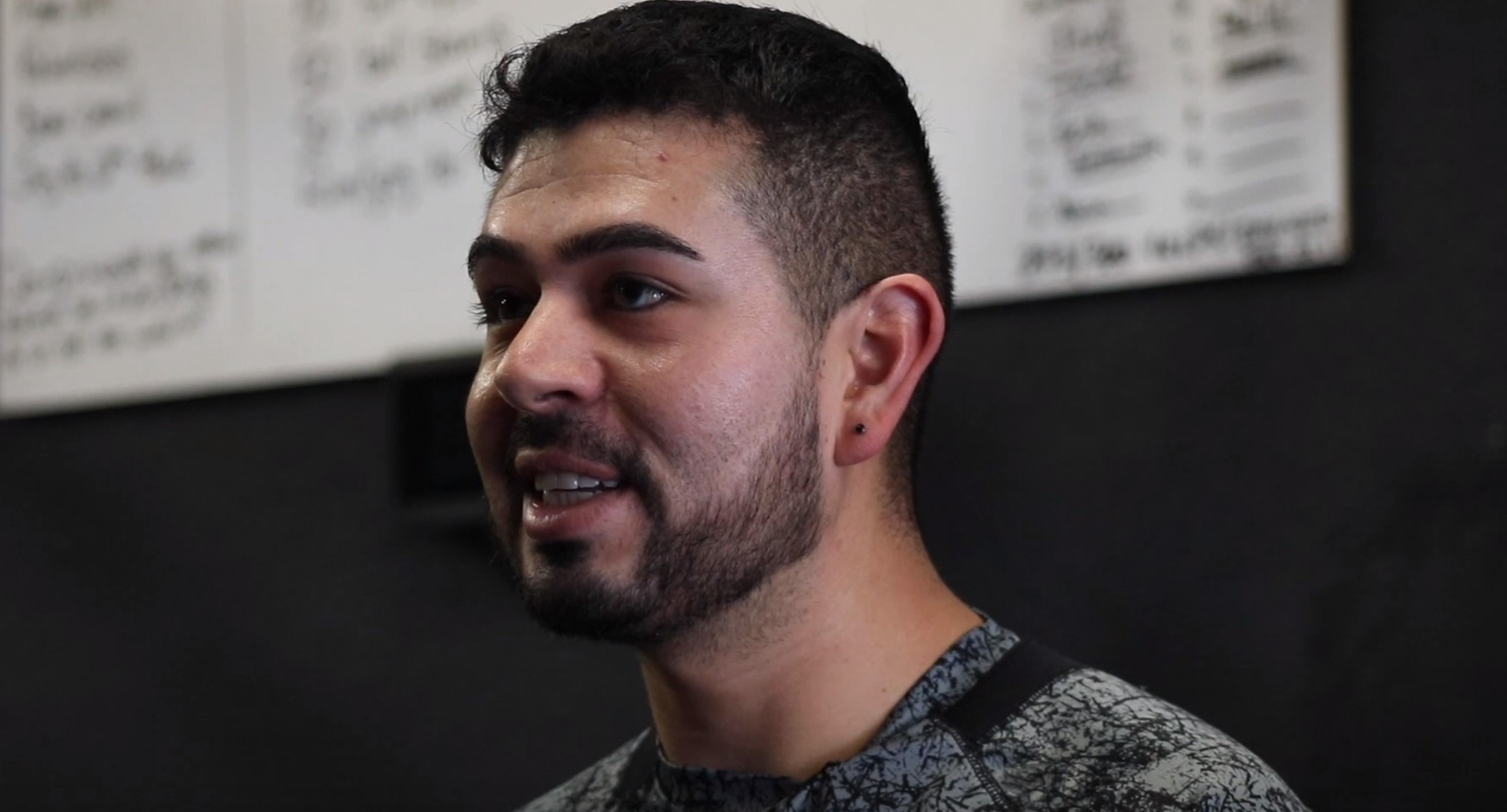
Meet Adam Quintero
Queer Gym member Adam Quintero was in search of a fitness program he could stay committed to, and was tired of queer social settings that centered around sex and drinking.
“I think sometimes, especially with queer men, there are spaces where you only talk about sex and you only talk about hooking up,” he said. “And it's just clubs and drinking. And I think in past year, along with the Queer Gym, I've looked for spaces that like, we talk about other things.”
After joining the six-week challenge, he realized that working out in a queer-friendly group setting kept him motivated enough to exercise consistently.
Being around other people, he said, makes him want to do the best he can, and forming friendships around shared goals has been an important part of his fitness process.
“I've made friends out of this that we don't — it's not about drinking,” he said. “It's not about talking only about sex. It's literally about just being friends with each other.”
Women and Femmes in Gyms
Women and feminine-presenting people in particular face unique challenges in male-dominated fitness environments.
“The gendered nature of gym settings is visibly reflected in the physical areas that men and women tend to occupy,” researchers wrote in a 2017 article published in the Journal of Research on Women and Gender.
“Women who reported higher social physique anxiety, higher body size dissatisfaction, and higher body mass index were more likely to work out exclusively in women-only areas of a coed gym and felt more positively about designated workout areas for women than their more body satisfied counterparts.”
This is a large part of what inspired Huerta to open Queer Gym, and the workout environment born as a result is now a reason why some feminine-presenting clients choose to stay.
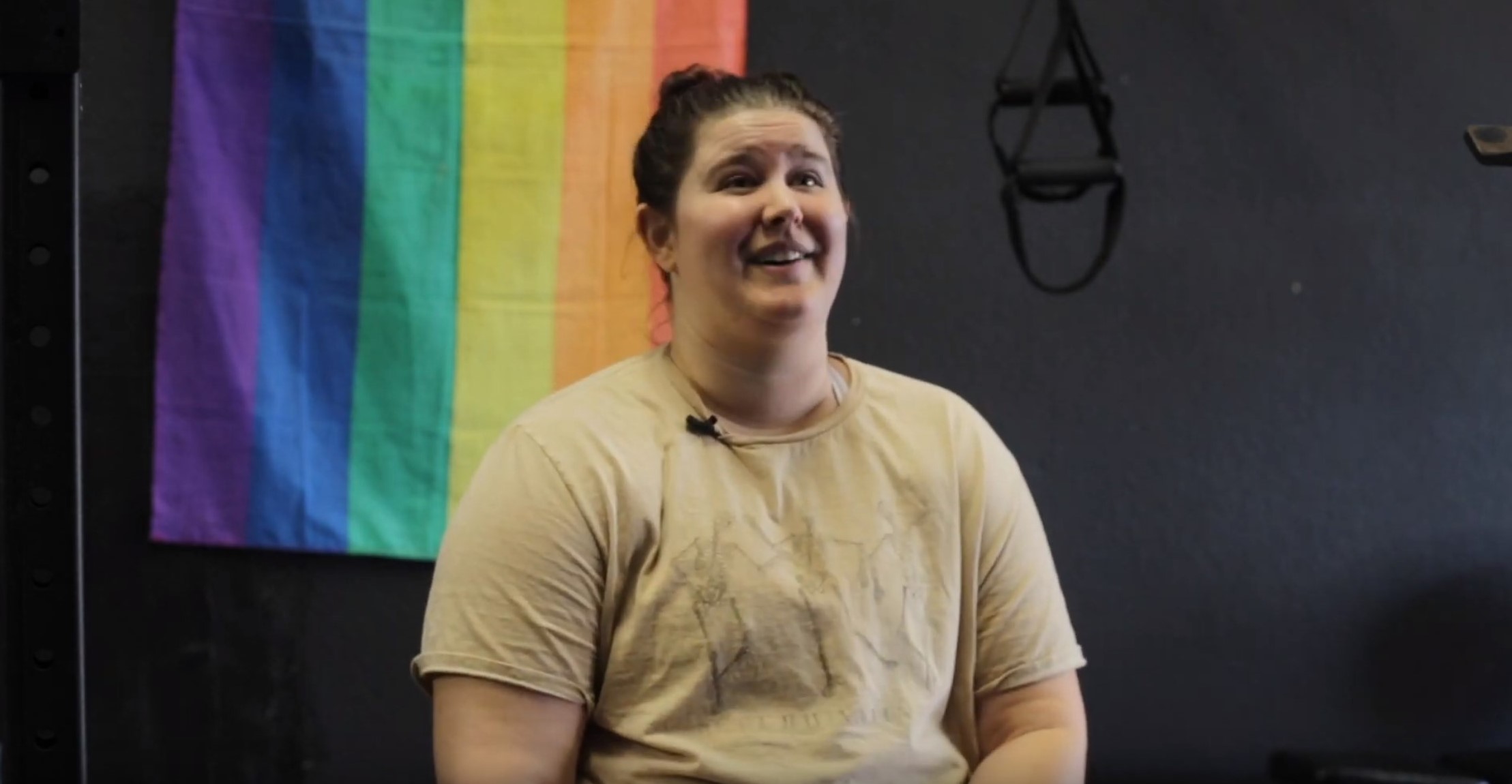
Meet Shaleena Reyersbach
Queer Gym member Shaleena Reyersbach, a recruiter for a staffing agency, experimented with several different fitness programs since recovering from a bad car accident several years ago.
She tried workouts like CrossFit and Krav Maga, but found the highly intense, male-centered spaces to be unwelcoming.
“Unless you're finding a women's only gym, you're gonna have to deal with being hit on and people telling you you're not working out right and all those kinds of things, which is really frustrating,” she said.
Searching for a more inclusive workout environment is what led Reyersbach to Queer Gym’s six-week challenge, which she recently completed.
“With the six-week challenge, they really, really dive into, what are your goals?” she said.
“The workouts are consistent week over week so you can actually feel yourself building and feel yourself getting stronger. After my challenge, I was like, I want to keep coming here because these are great workouts and it's great space.”
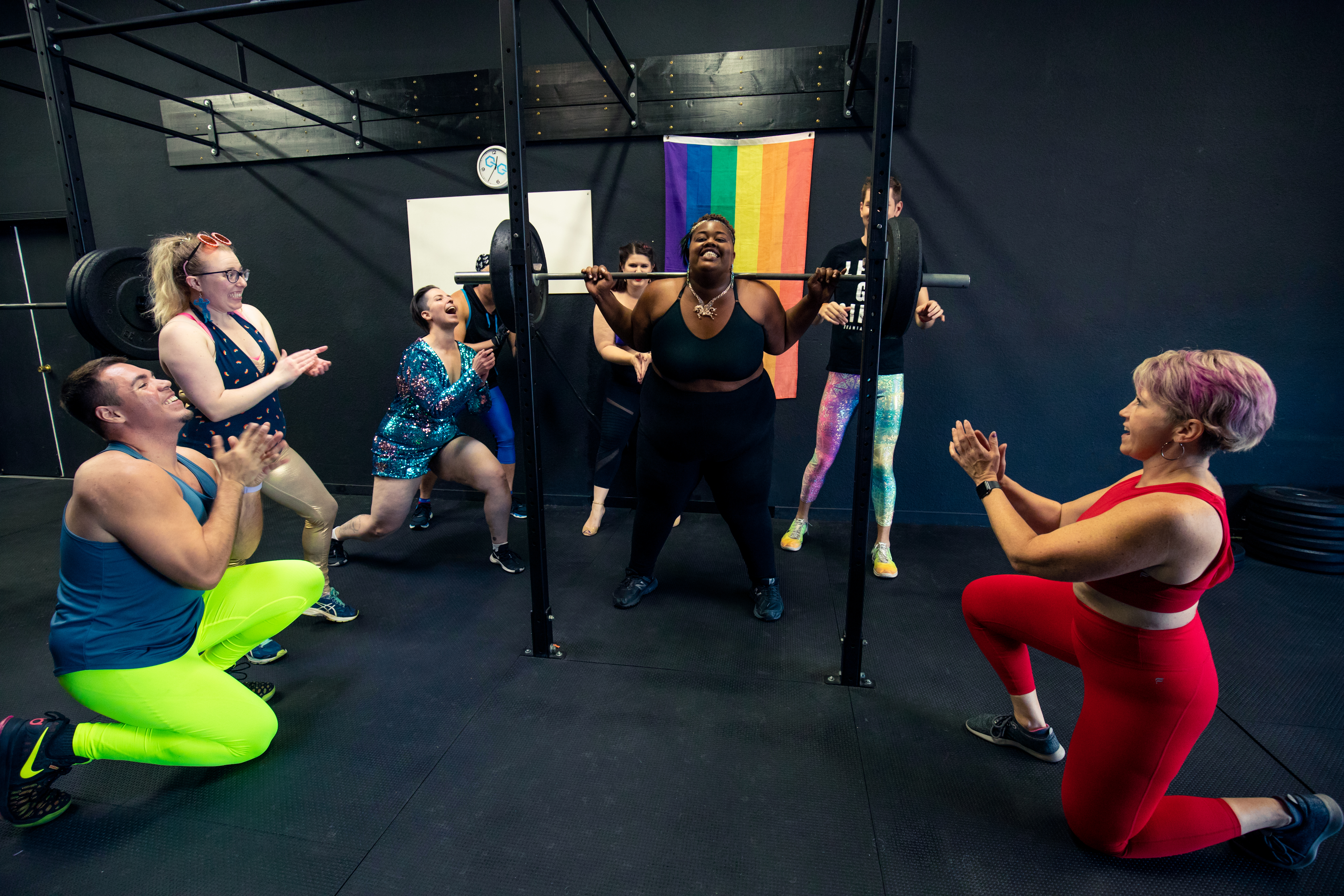
Part 3: Sober Queer Spaces
Why having spaces to build community without
drugs or alcohol is important to the LGBTQ+ community
The Queer ATOD dilemma
Drug and alcohol use has long been a pressing issue in queer communities around the world. For many queer people, substance use acts as relief for the effects of societal factors like homophobia and transphobia.
This becomes even more prevalent when considering other factors like race, class, and disability.
“There is ample research to suggest that rates of ATOD (alcohol, tobacco, and other drugs) use, substance abuse and dependence, and negative consequences stemming from ATOD use are higher among LGBT populations than heterosexual populations,” Michele J. Eliason, a professor of Health Education at SF State, wrote in a 2010 report.
According to Eliason, tobacco and alcohol companies have historically been one of the only industries interested in funding queer events — hence the barrage of rainbow-plastered beer and liquor advertisments that show up on television, social media platforms, and the sides of parade floats all throughout pride season.
“Without alcohol and tobacco funding, many LGBT functions would cease to exist, even today,” Eliason wrote.
Queer Gym Owner Nat Huerta knows this phenomenon personally, and takes pride in providing an environment where her clients can connect in a sober setting. “I made it out of the club scene, but I know a lot of queers get stuck in that,” she said.
“My experience was like, when you came out, if you were under 21 you were at all the parties getting fucked up. Then when you turned 21 or you got a fake ID, you were in the clubs. So that's a big part of the coming out experience — at least for me it was.”
Coach KJ Kelsch had a similar experience: for her, growing up in the queer community meant, as she put it, “basically existing in the bar scene.”“That's not what I personally want,” KJ said, “and that's not what I want my community to be around. And I think that this space in particular is really, really important.”
Spaces like the Queer Gym, and others that foster LGBT+ social life seperate from drugs and alcohol, are essential to the wellness of queer communities.
They ensure that people have healthier options when it comes to forming friendships and chosen families — something that, in the long run, could end up saving lives.
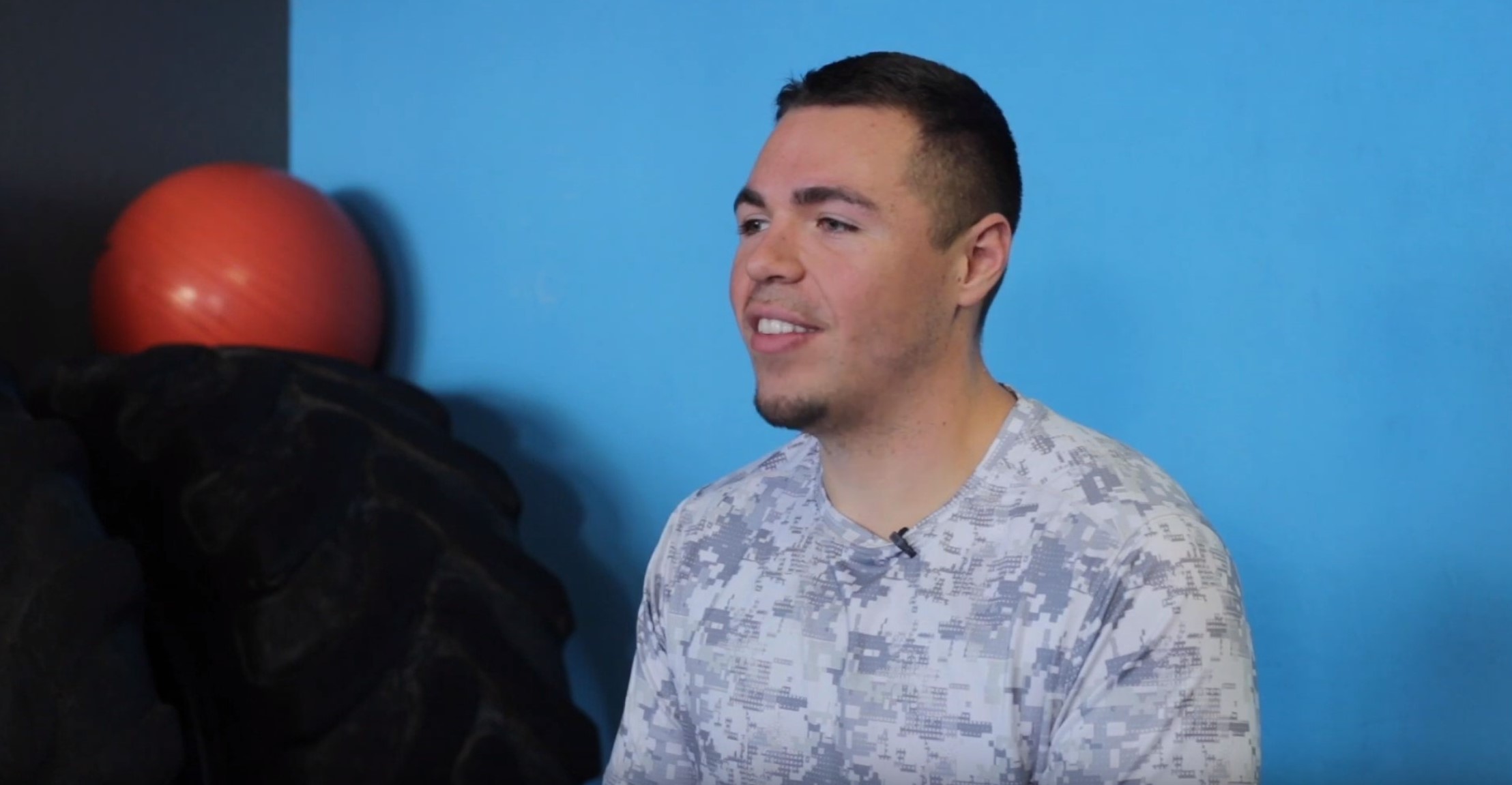
Meet Eric Camacho
At his heaviest, Queer Gym member Eric Camacho weighed 330 pounds. Now he’s down to 215, with the help of the six week challenge and the community he’s found through it.
Camacho grew up in a conservative, religious household. He didn’t have the chance to explore his queer identity until adulthood, when he began to recognize the value of incorporating his search for an inclusive community with his long-term fitness goals.
“In terms of being like queer and whatnot, it's really important to have access to spaces that are empowering from like a health, nutrition and wellness kind of space,” he said.
Community, he said, is how to fill the gap between temporary fitness accomplishments and the lasting results of long-term objectives.
“We're all hungry for this,” he said. “We want it and then you feed off of the community.”
The Bay's sober queer spaces
For LGBTQ+ people in the Bay Area, having a space to build community without the influence of drugs and alcohol is vital to their physical and mental well-being.
While many queers enjoy substances on a regular basis, it is important to maintain a balance in order to survive. Each day that LGBTQ+ people connect without a focus on inebriating themselves, they pave the way for more sober queer communities in the future.
There are far more queer sober spaces today than throughout history.
We compiled a short list of resources in the Bay that provide different services from meeting spaces to healthcare and therapy, to support for artists and places to practice kink culture.
These are only some opportunities for LGBTQ+ people to connect. For more information, The San Mateo County LGBTQ Commission maintains a comprehensive list of queer resources.
For Coach Nat Huerta, drugs and alcohol were a large part of her coming out experience. "I made it out of the club scene but I know a lot of queers get stuck in that."
Those experiences inspired her to create a space for queer people to focus on their health and community. "I think spaces like this are so important," she says. "It's a good time to be queer, a lot of revolution is happening right now so I'm fucking pumped."
SF LGBT Center
(415) 865-5555
1800 Market Street
San Francisco, CA 94102
Queer Women Of Color Media Arts Project
(415) 752-0868
Mailing address 1014 Torney Avenue, Suite 111, San Francisco, CA 94129
UCSF Alliance Health Project
(415) 476-3902
1930 Market Street
San Francisco, CA 94102
SFWAR- Women Against Rape
Office Line: (415) 861-2024
24-hour Hotline: (415) 647-7273
3543 18th Street, #7
San Francisco, CA 94110
Erobay
San Francisco and Bay Area
BDSM community events calendar
Meet the team
Queering Your Workout was created by three San Francisco State students
For Newsworx, Launched December 20, 2019
